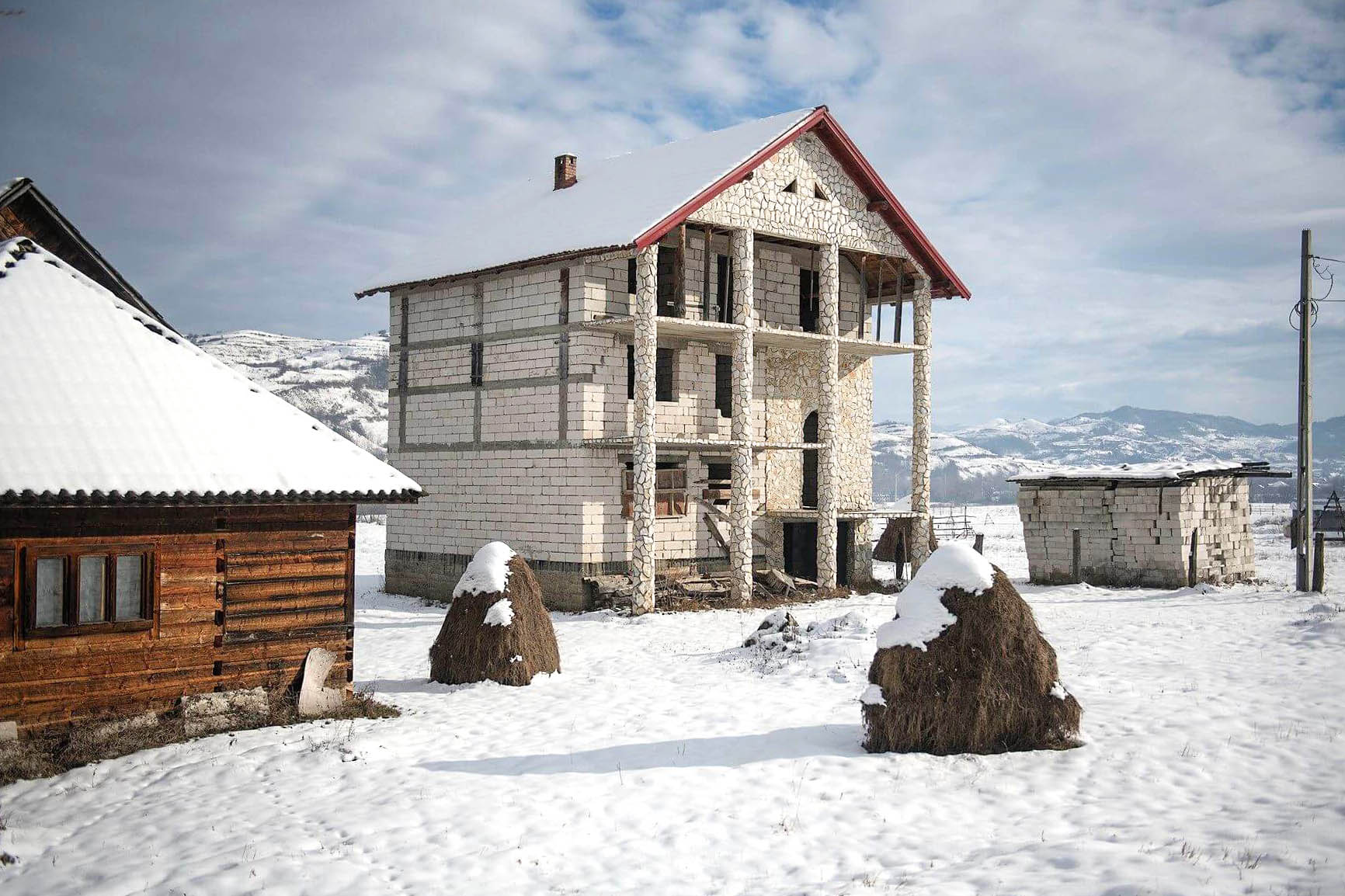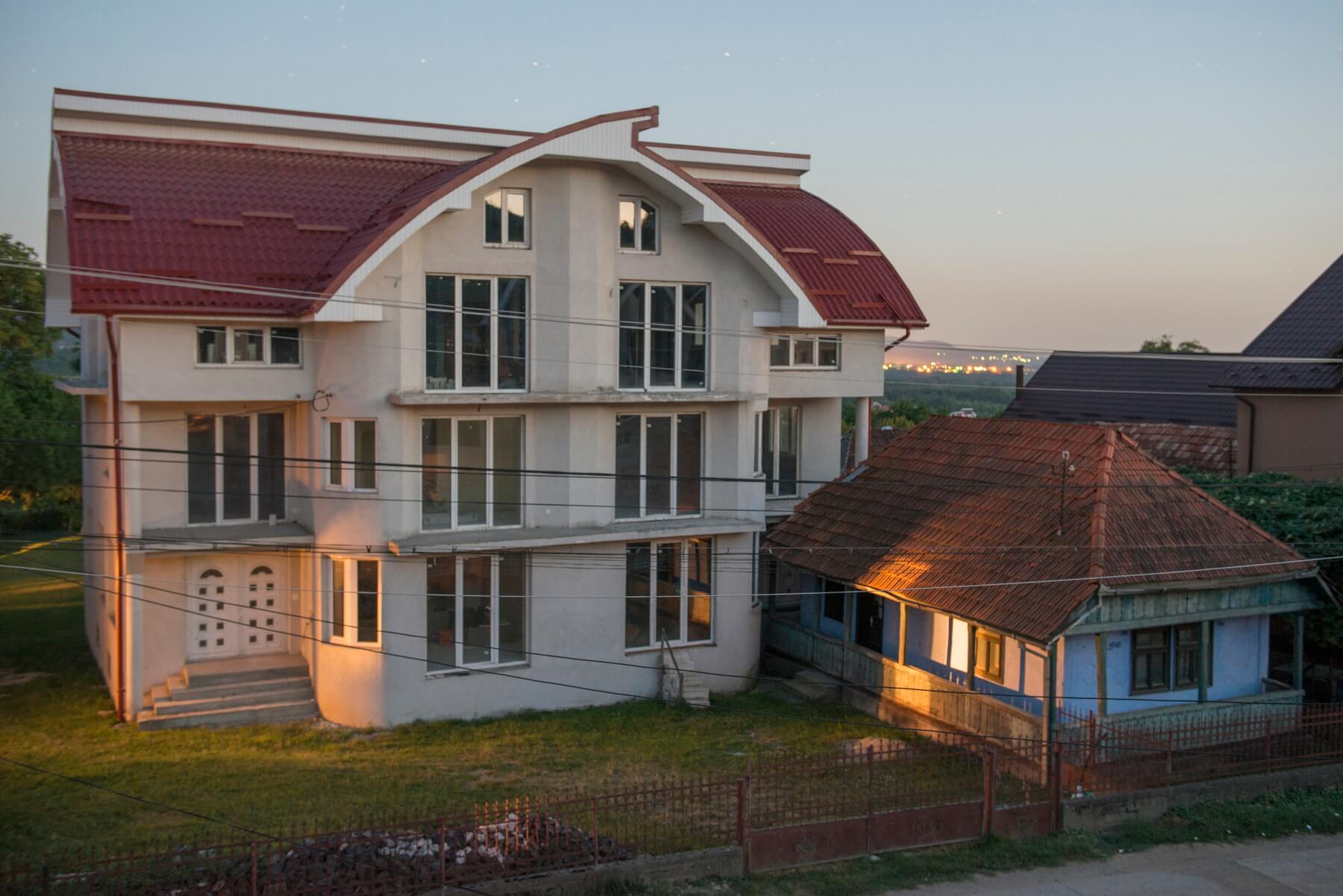
"The Shogun" as he calls himself, a Romanian estate developer, searches for a place to build a new facility
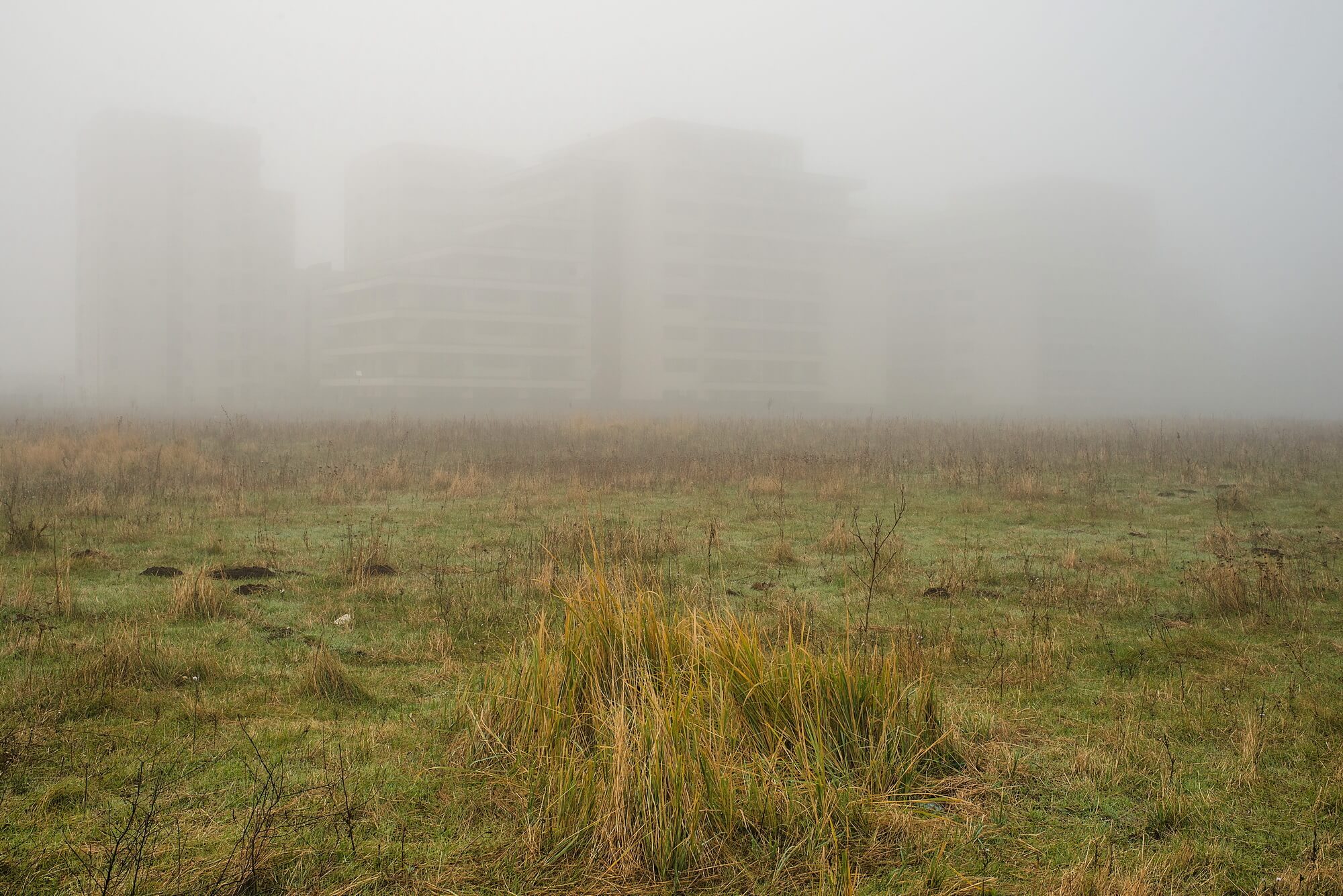
"Green Vista" residential complex barely seen on a misty morning. This is a new apartment block flat built for the upper middle class in the Northern Bucharest, Pipera neighbourhood
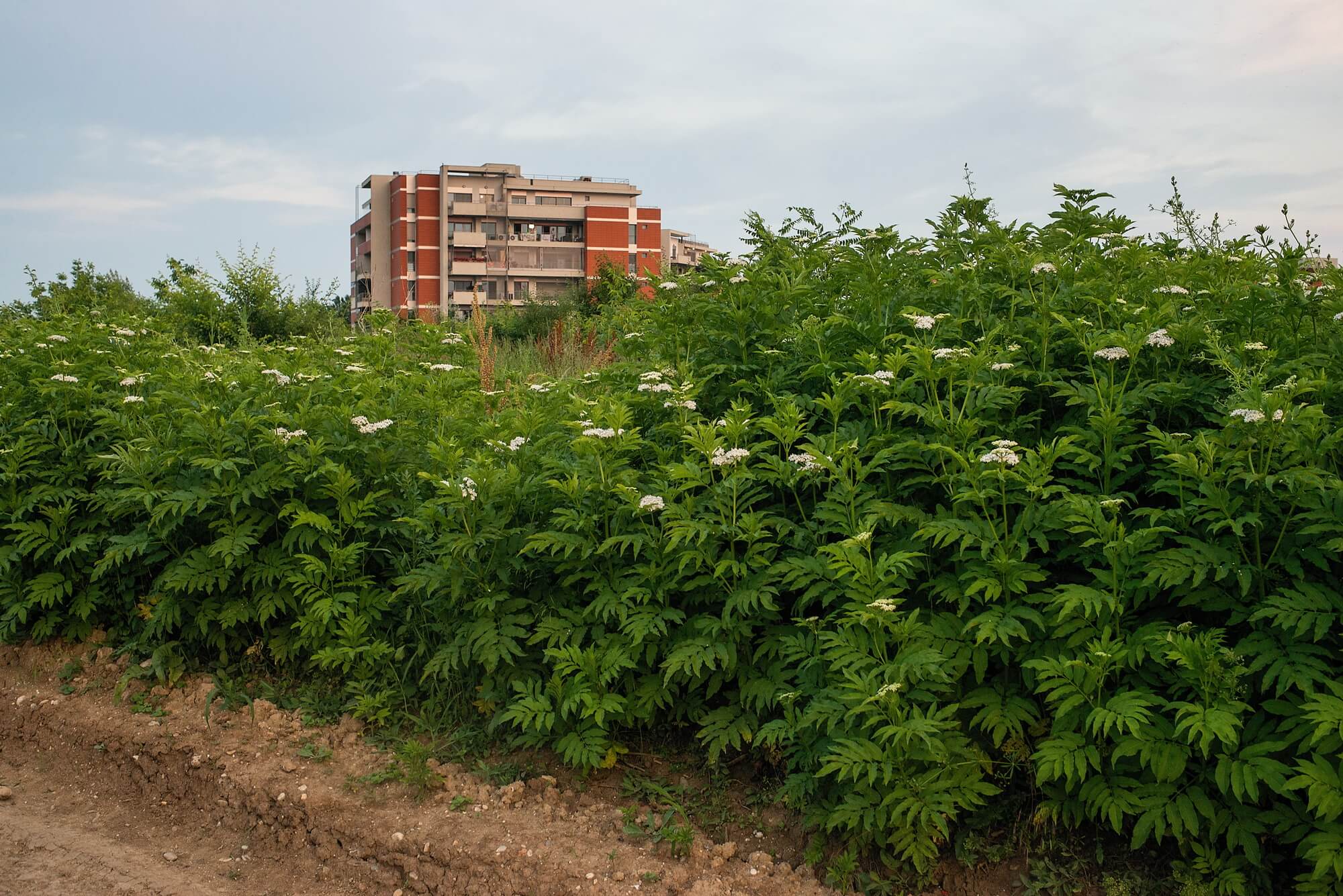
Green Lake middle-class residential building in the North Part of Bucharest
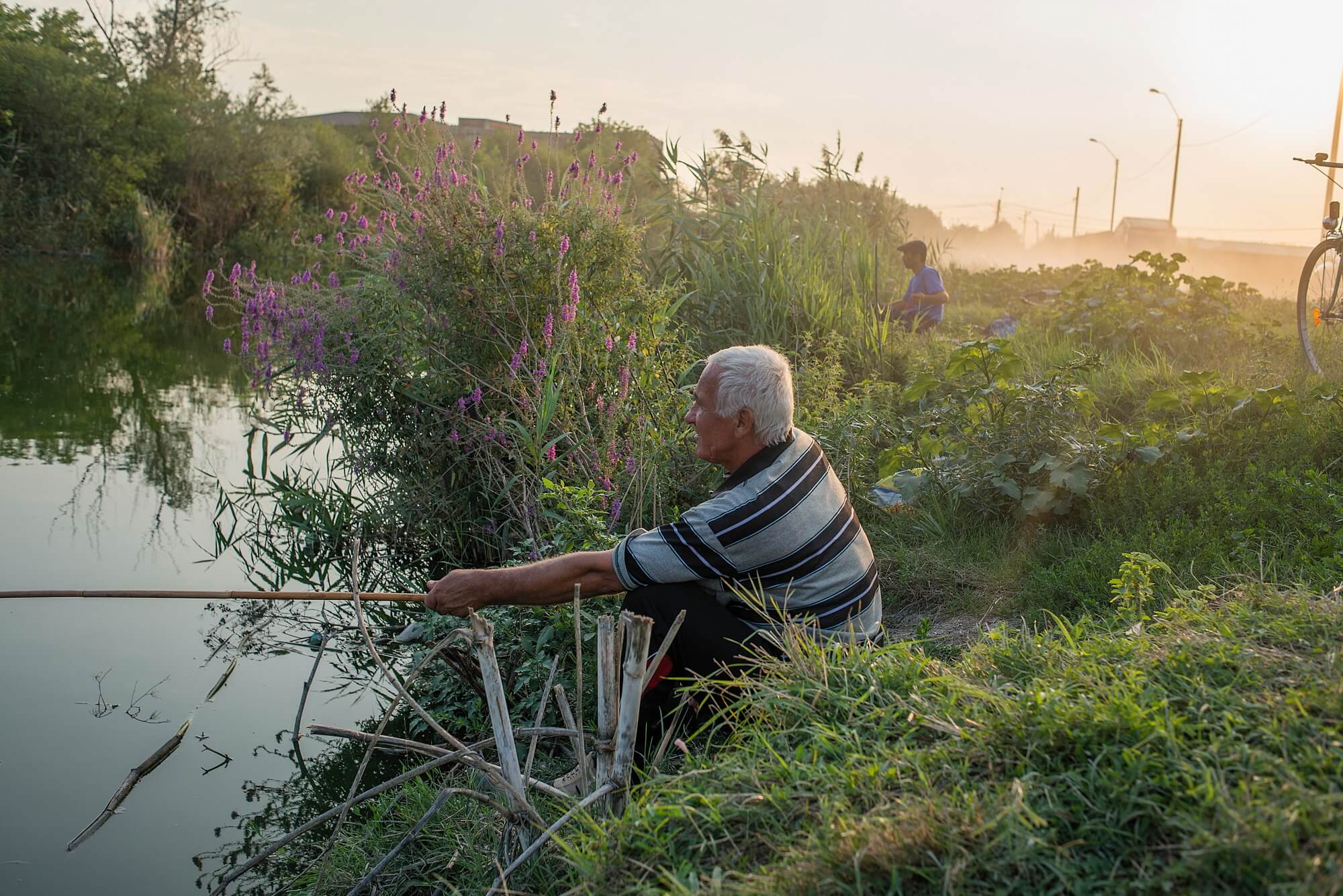
People fishing in a small lake, Tunari, Northern Bucharest
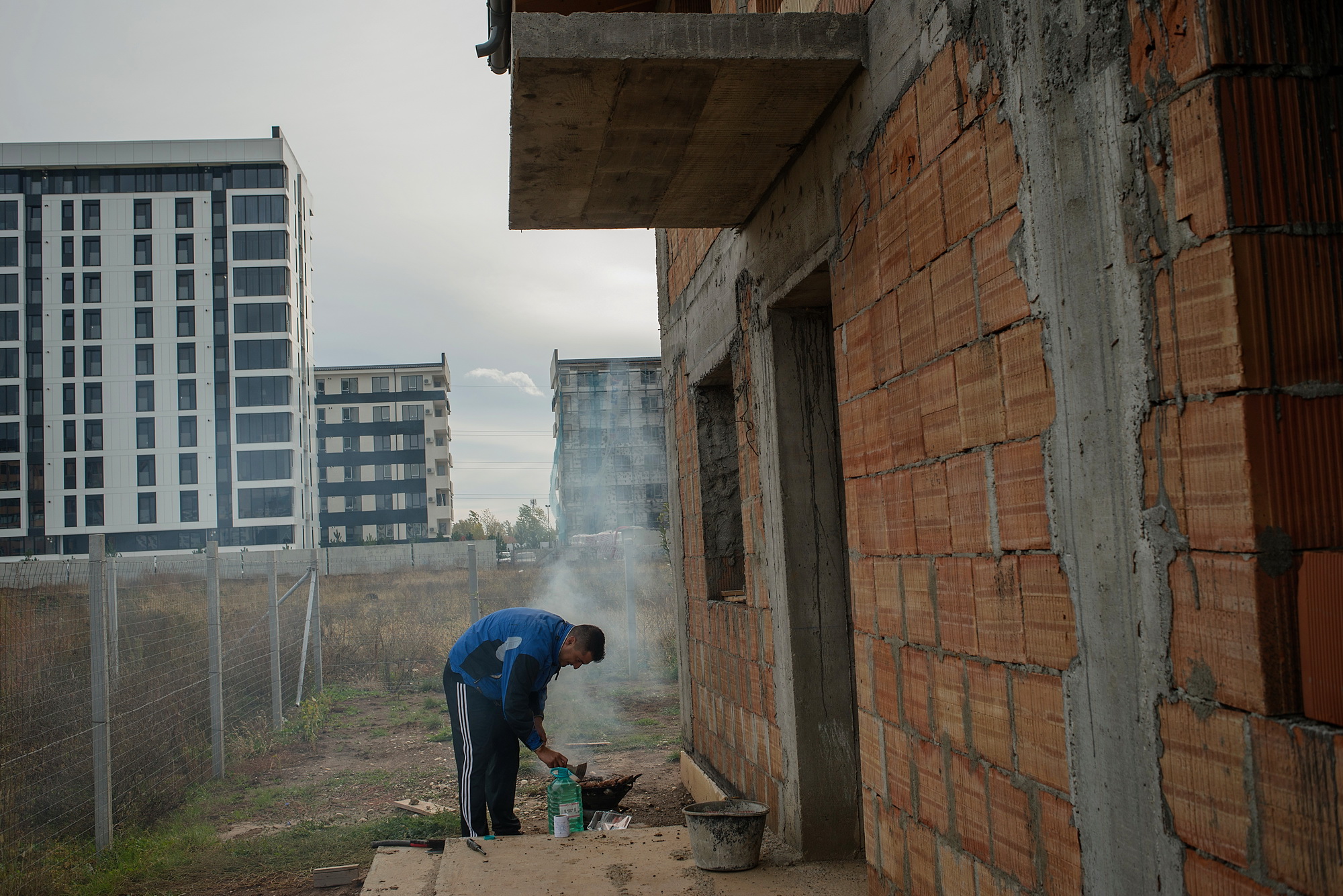
A man who has his own house under construction makes a barbeque for his family.

A sale agent and a young couple are signing a sale contract, over a glass table put over a small scale reproduction of an upper-class residential area which soon will be built in the Northern Part of Bucharest. Real Estate Fair, Bucharest

A woman is walking her dog outside her flat in a new residential building built at the periphery of Bucharest, in Popesti Leordeni
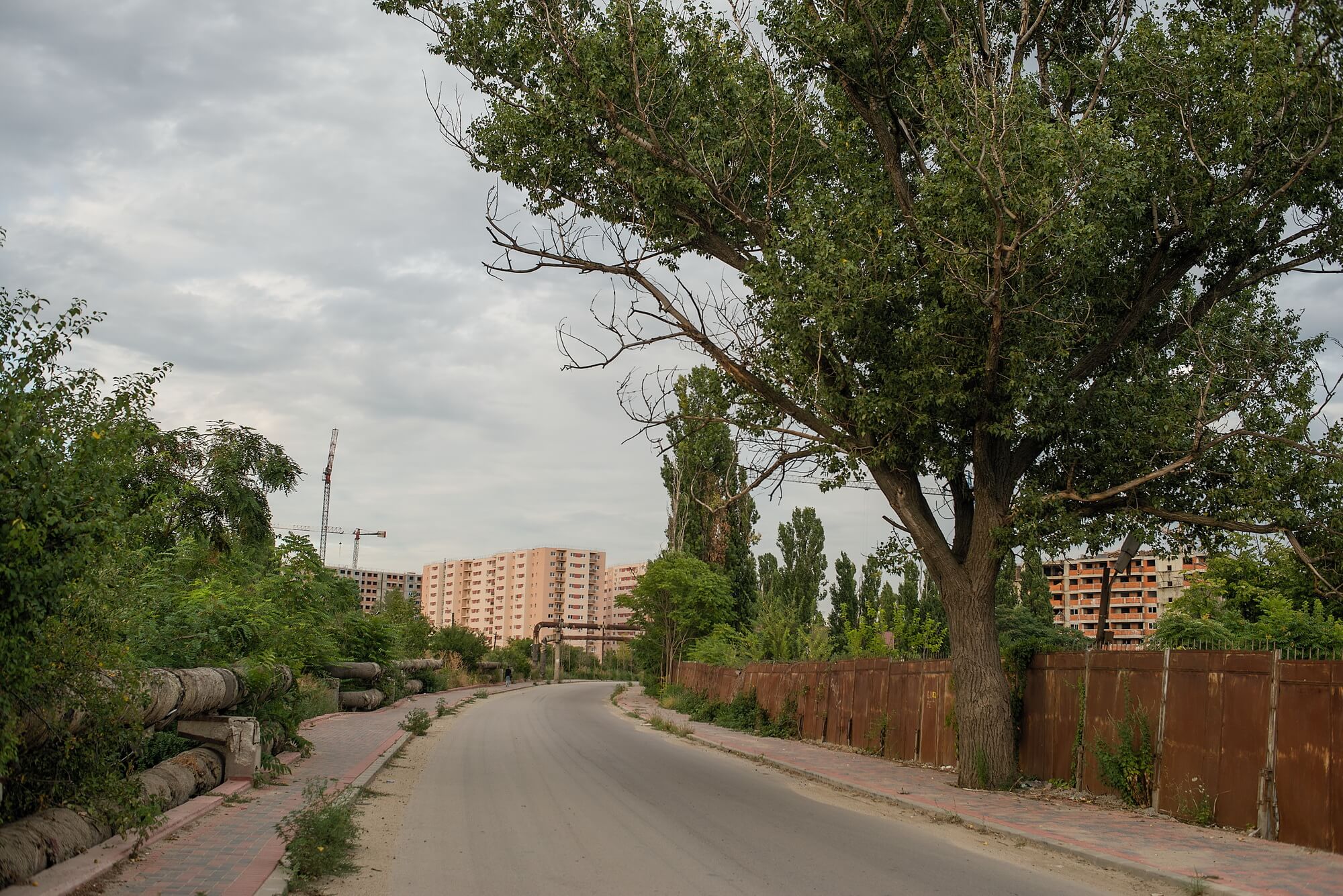
"Palladium Residence", a newly built apartment block for the lower middle class, is seen from the distance
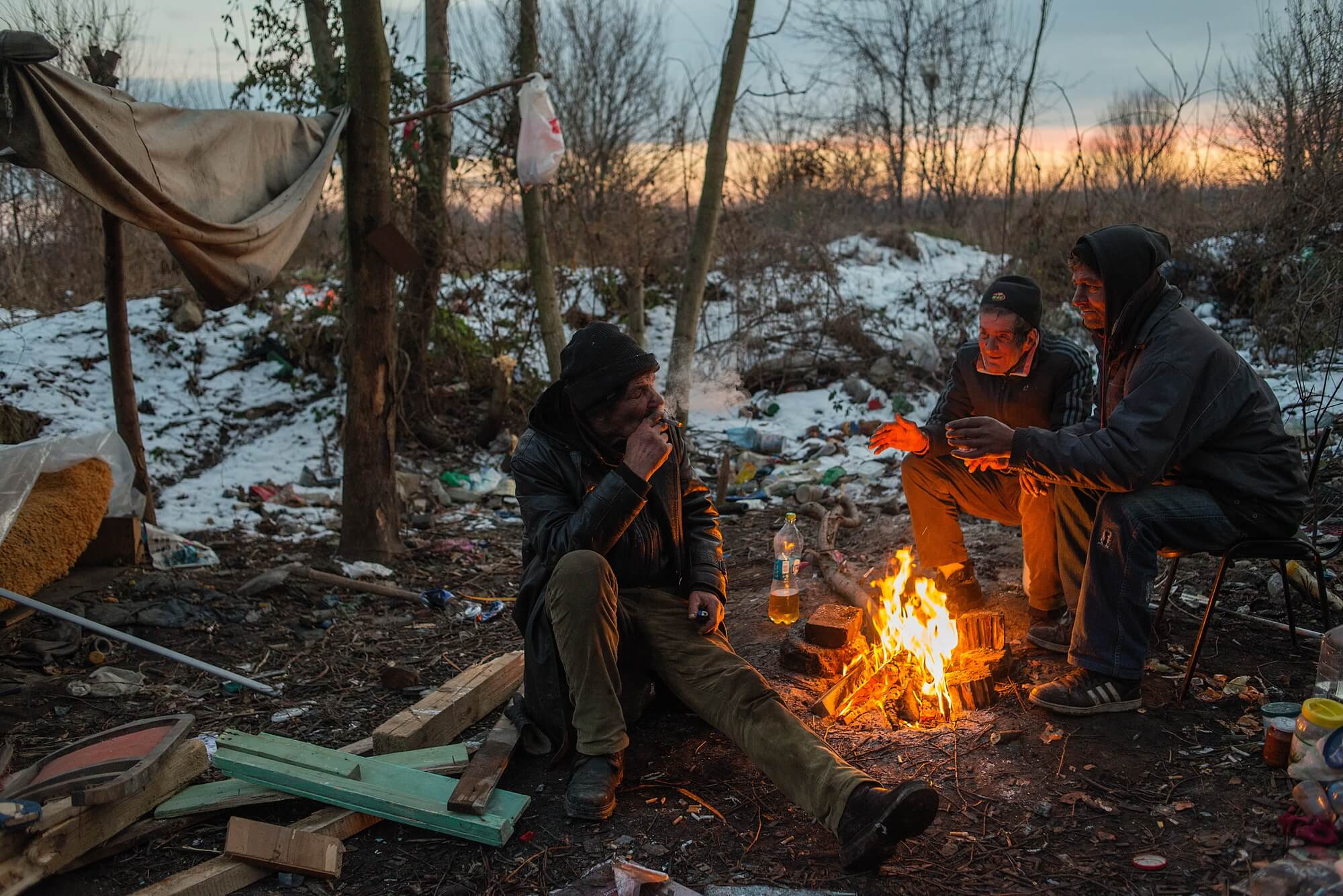
Three homeless men are warming over a fire. They live by sorting out the garbage and later sell the recycled material (glass, plastic). They live in a forest a hundred meters away from the newly built houses and blocks for the middle class in the south part of Bucharest, Drumul Taberei. As their makeshift house is not good enough for strong winter, once the temperature is dropping to freezing degrees, they go to sleep in the sewage system.
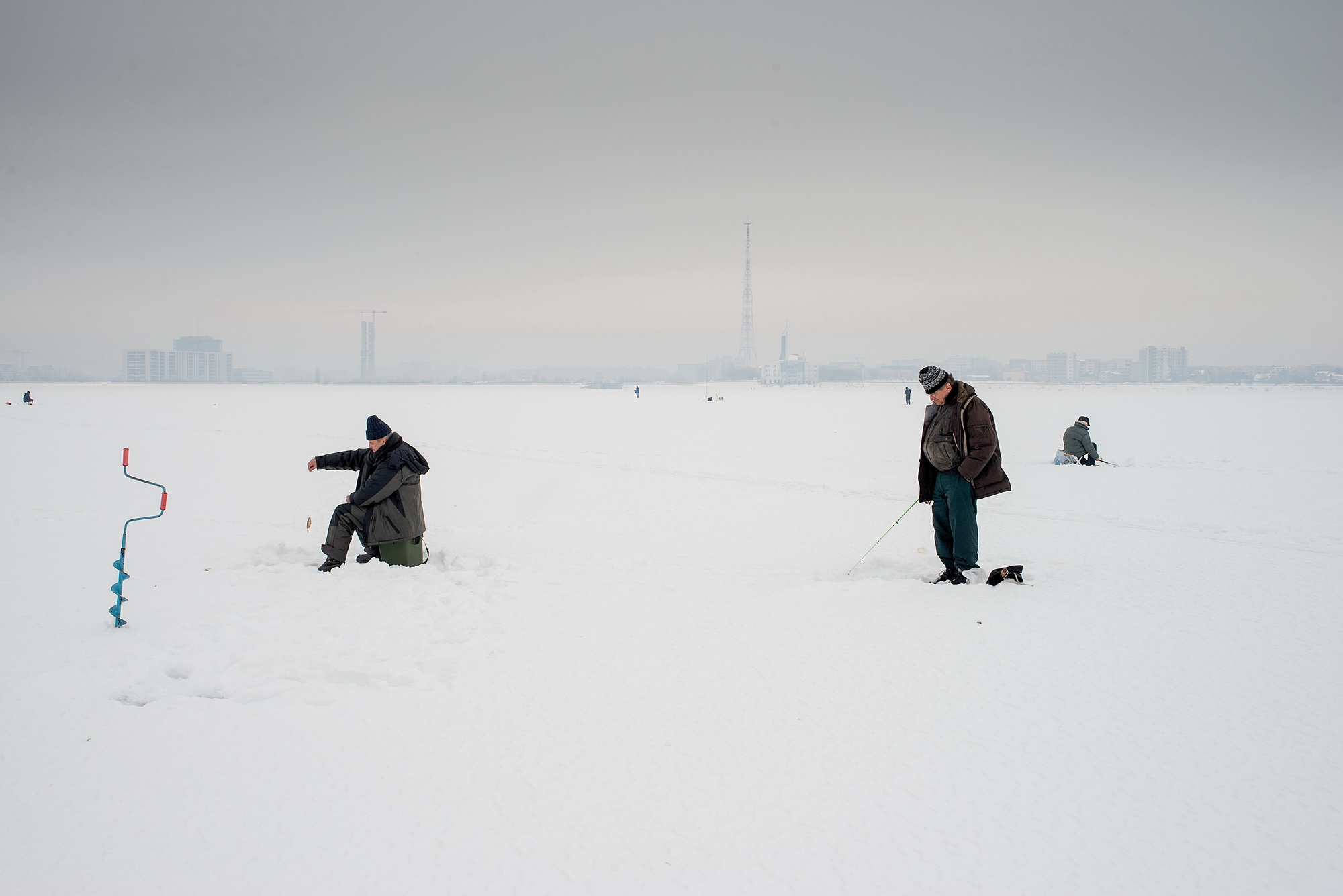
People are ice fishing on the frozen surface of the largest artificial lake in Bucharest, Lacul Morii. The lake was built by the communists in the '80s to protect the city against floods. Back then, cement was poured over a decommissioned residential area, which included a cemetery and a Church. For this reason, the locals consider the lake cursed, although many, lacking other opportunities, are swimming in its dirty waters or sunbathing nearby

Ion Tudose, a retired man with a passion for pigeons, grow them on his communist flat apartment balcony. "My pigeons were my only chance to create something on my own. They are 100% my own result. They are brave and determined. I made a deal with my wife: when we move, we need two balconies: one for her, one for my pigeons"
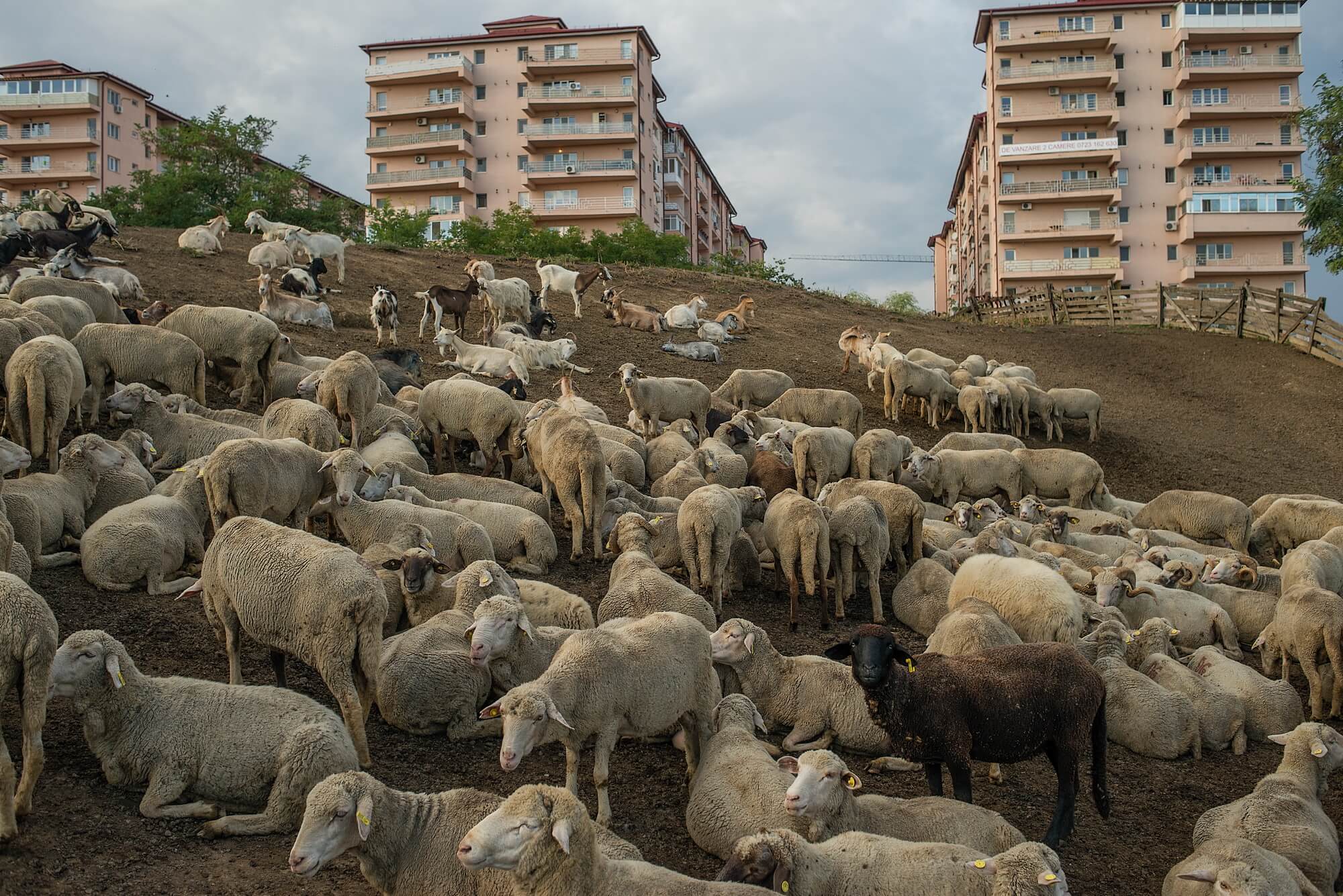
A flock of about 500 sheep and goat rest at a farm close-by a newly built apartment complex, called Confort City. The farm has been here, at the edge of Bucharest, for decades. The apartments have been build 10 years ago; since then, their inhabitants are making constant efforts to shut down the farm, complaining against the smell and noise. Today the farm is almost closed, but as its own decision: the owner is too old and nobody else wants to continue this business
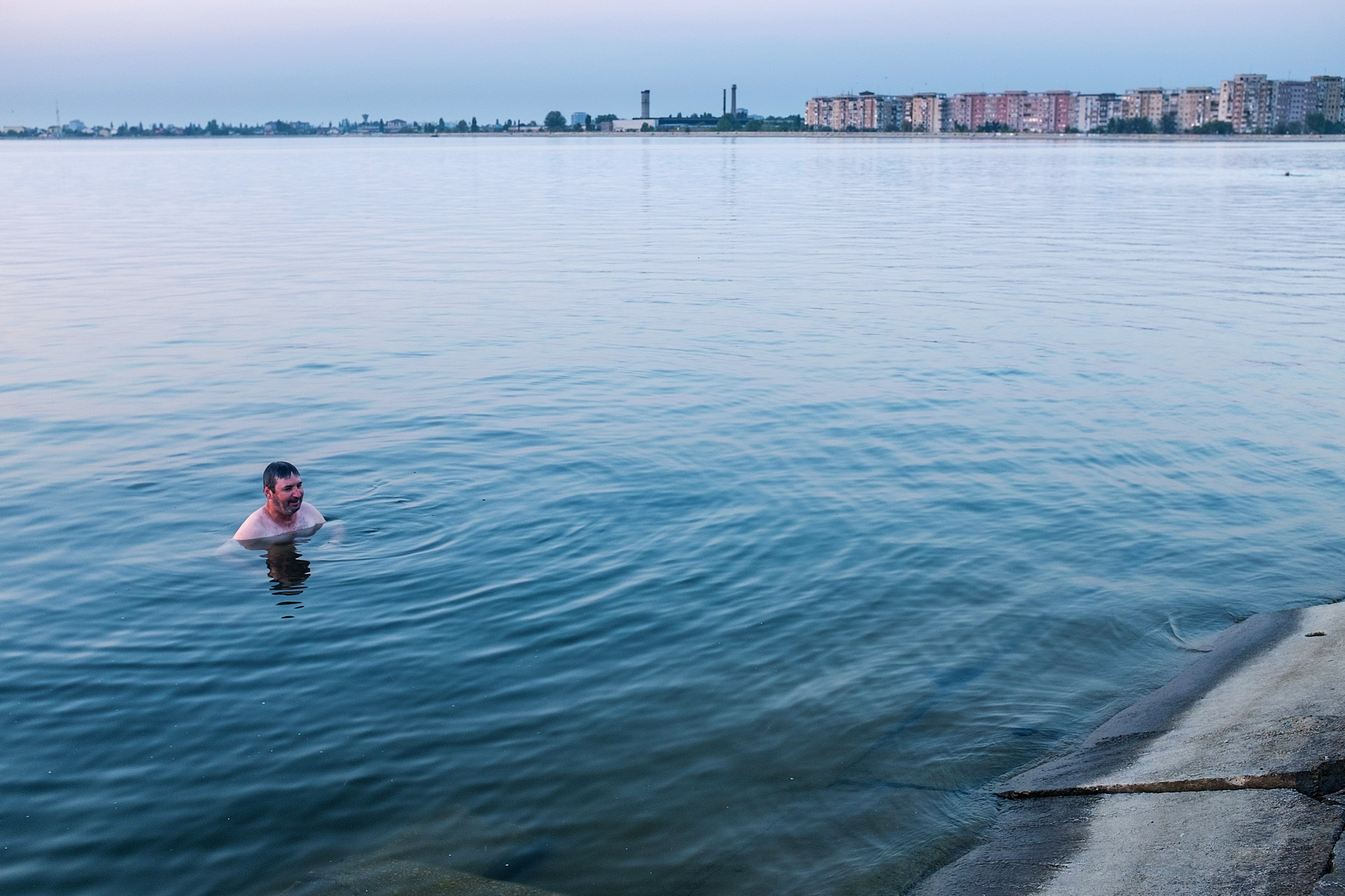
A man living nearby, baths in the Morii Lake. He is doing this each afternoon after he finishes his job. "The water is clear, the temperature's perfect. This is how I get rid of my black toughs" The lake was built by the communists in the '80s to protect the city against floods. Back then, cement was poured over a decommissioned residential area, which included a cemetery and a Church. From this reason, the locals consider the lake cursed, although many, lacking other opportunities, are swimming in its dirty waters or sunbathing nearby.
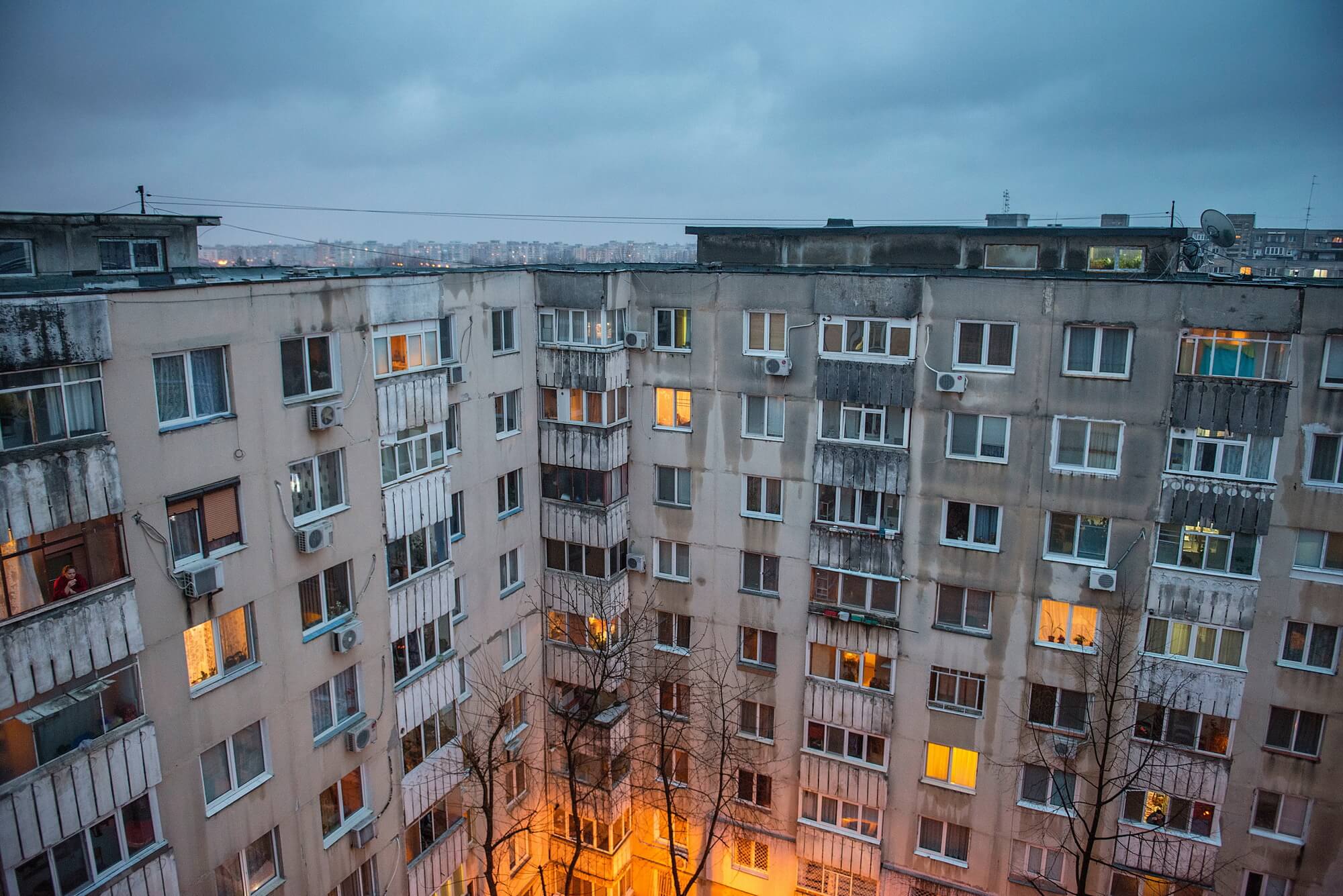
A typical communist flat neighbourhood built in the '70s at the South periphery of Bucharest. Although often ran down, these old apartments keep their market price at almost an equal price with the new ones. Building a new apartment is like a lottery: you may find a good one, or you can have bad luck: the developer may go bankrupt and never be able to finish, it may be improperly built or built on a piece of land which later may be lost after a process

The gated community of Cosmopolis - a small town with villas, blocks, shops, kindergarten and a mall - the biggest of this type in Bucharest
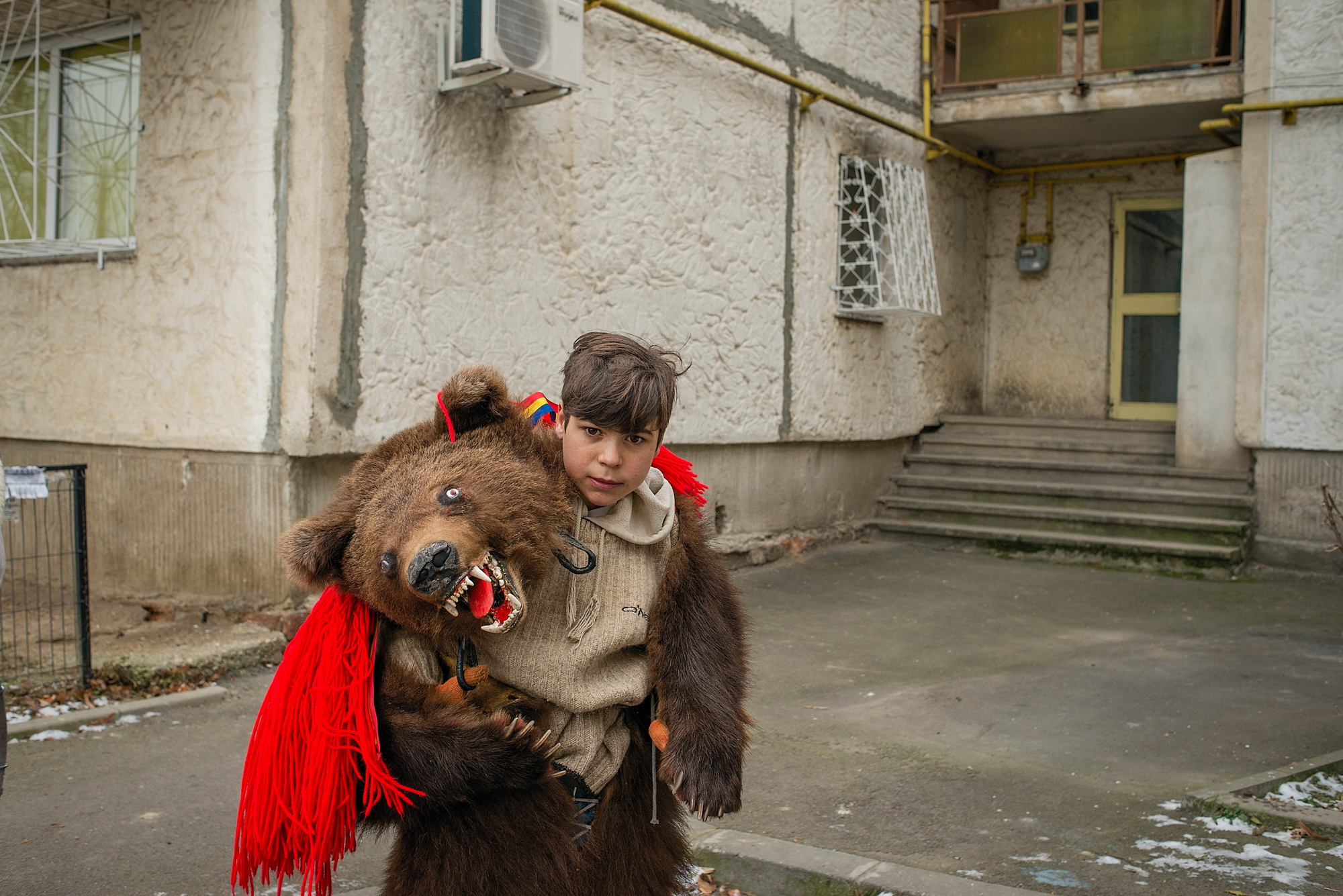
A boy wearing a natural bear skin and mask poses in front of a communist block of flats in South Bucharest, Piata Sudului. He is part of a bigger group of 20 youngsters, which came from the Bacau area (300 km away from Bucharest), countryside, to perform the Bear Dance. This old ritual, which is losing its track in the pagan period symbolizes the death and the rebirth of the bear, which is the link with the New Year Eve and harvest
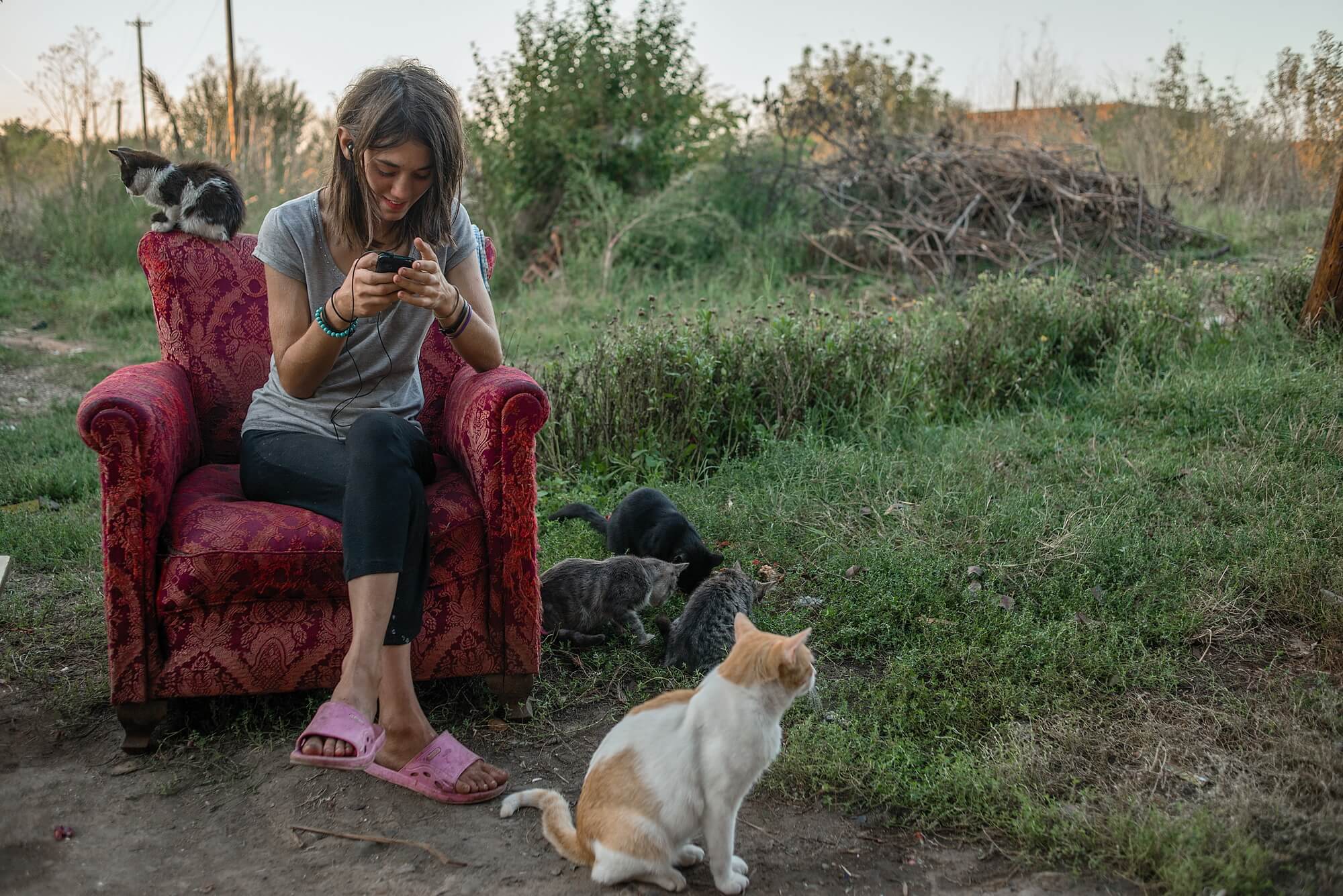
Alina speaks with her friends, using a hands-free while surfing the internet. Alina belongs to a very poor family which lives in between the railway tracks, in a facility room which hosts the electrical power equipment. They live without legal forms, without running water - the people maintaining the railroad facilities allow them to have that shelter but asking in exchange for a small amount of money. They live by collecting iron scrap.
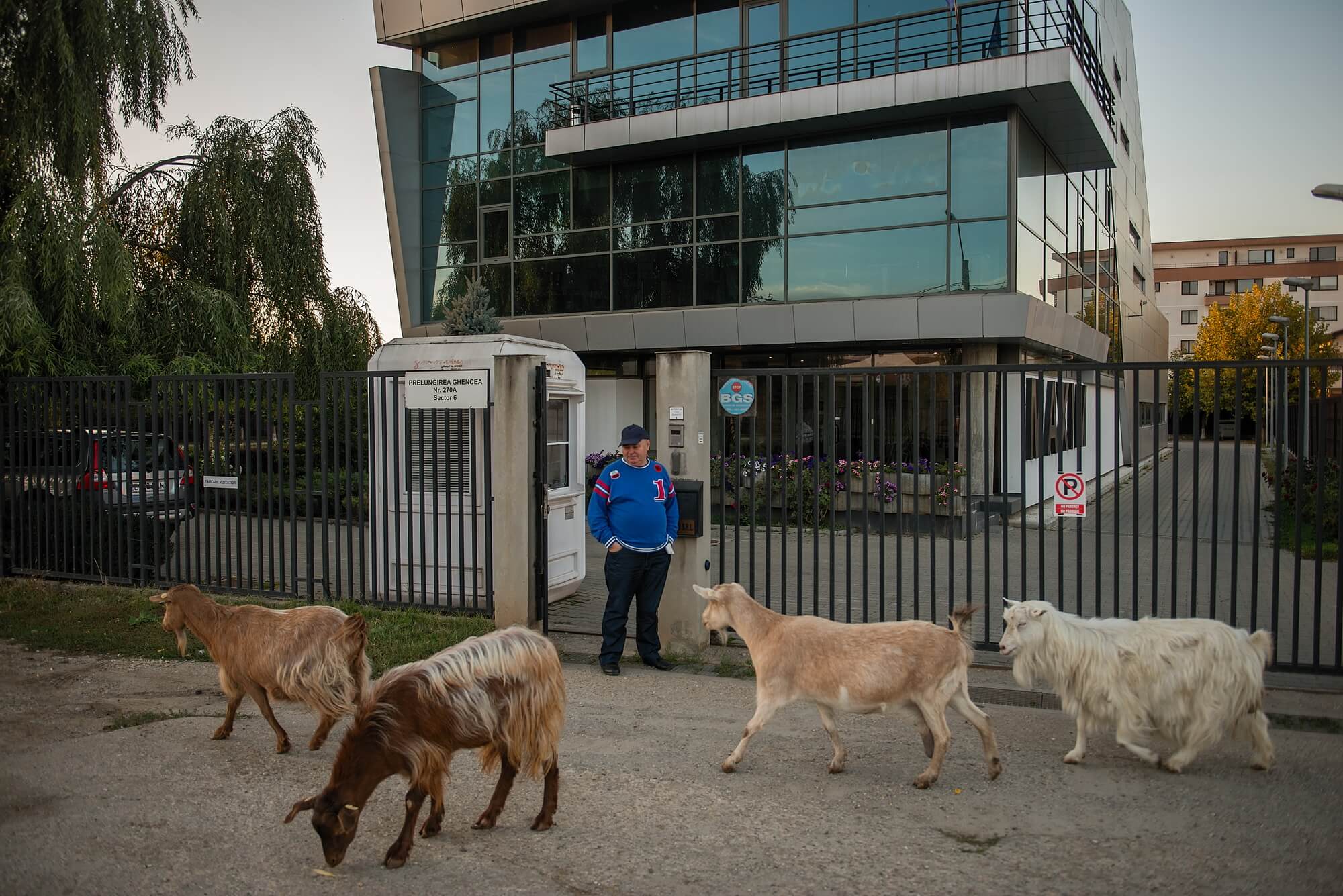
The guard of a local company watches the goats which are led for a walk by a neighbour
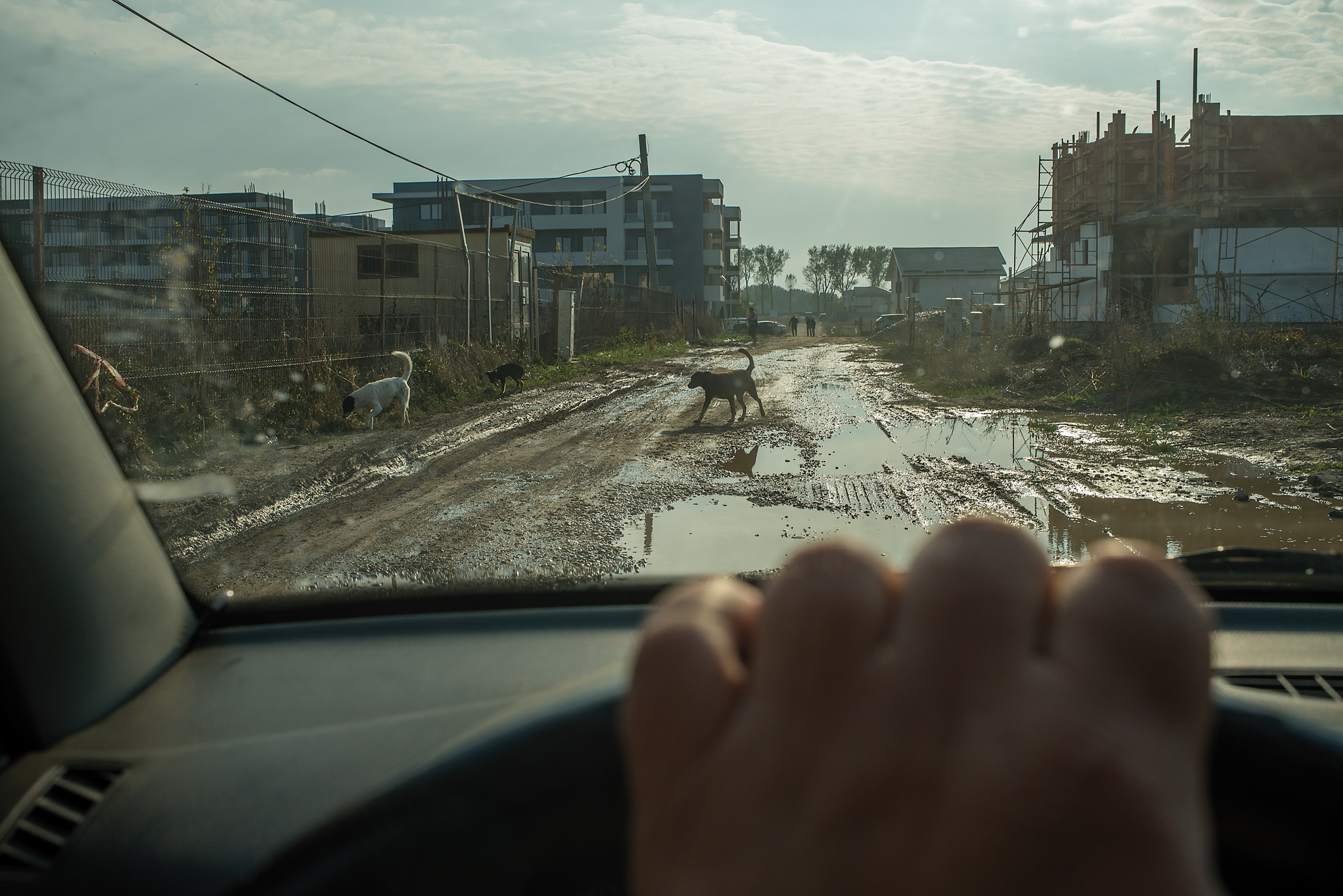
A self-portrait of the photographer working at the periphery, driving through a new residential area, which already has new inhabitants moved in, South of Bucharest, Cernica
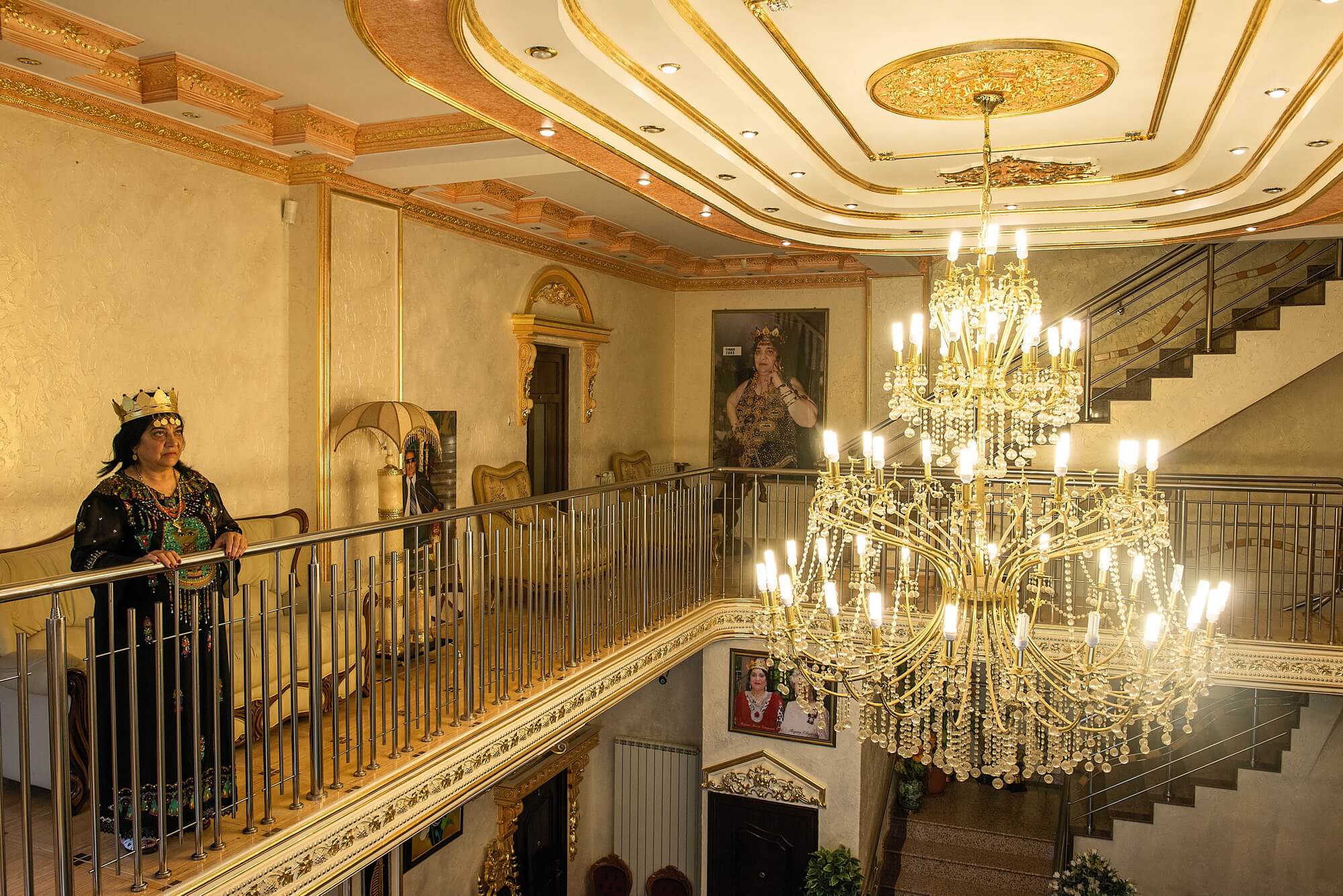
Maria Cimpina, self-proclaimed "The Queen of the White Magic", poses at the periphery in Bucharest North. There are numerous witches in the North part of Bucharest, and Marina Cimpina is one of the oldest in the field and the most well known. Many people, sometimes educated ones or public persons as politicians and stars are using their services, in the belief that this is a way to solve their problems.
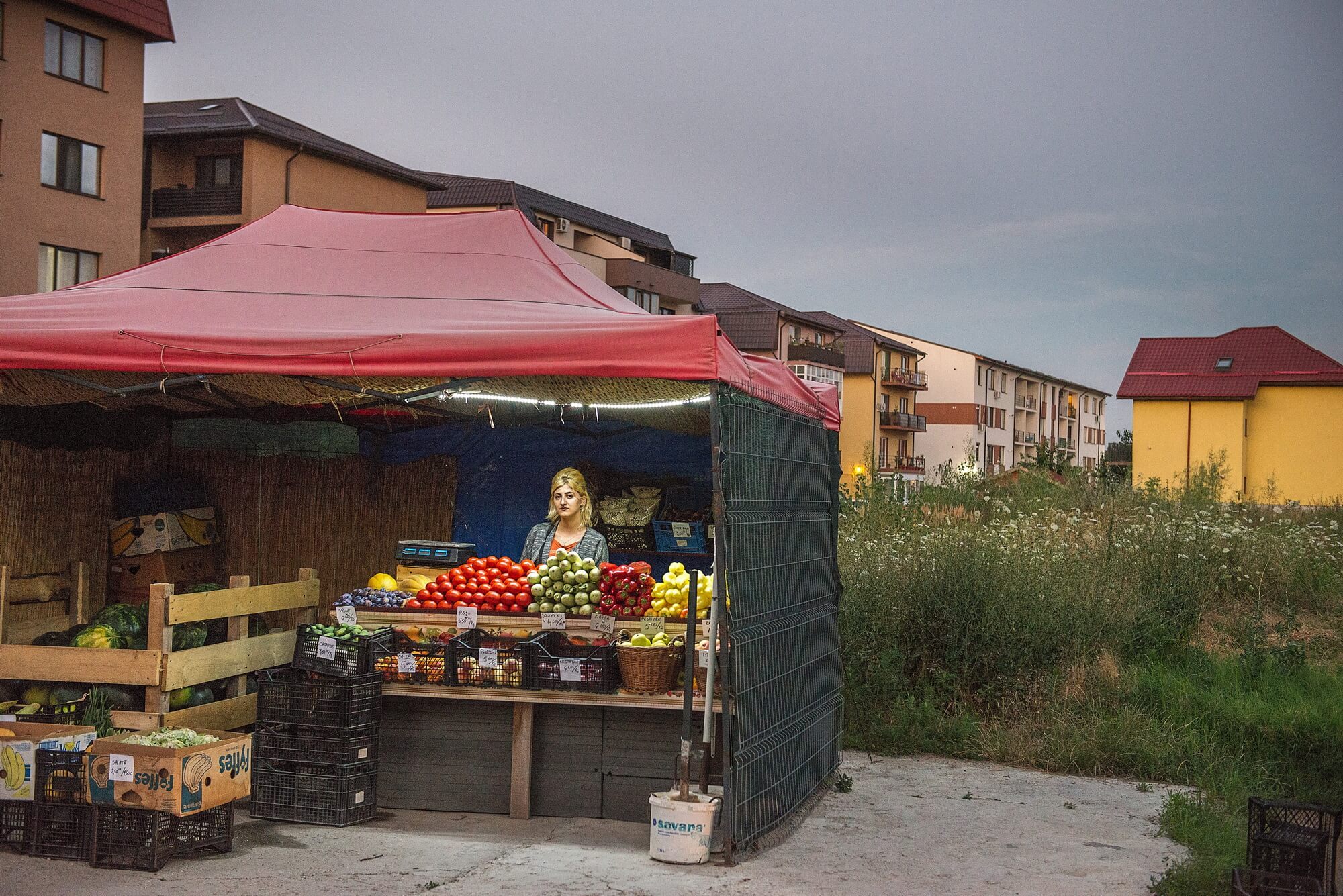
Elena, a vegetable seller in a newly built residential quarter in Rosu, Bucharest. Formerly a village within the capital borders, Rosu was a village of farmers which provided vegetables in the city market. Now, as their houses and land is sold to construct bigger things, the vegetables are coming mostly from imports (Turkey)
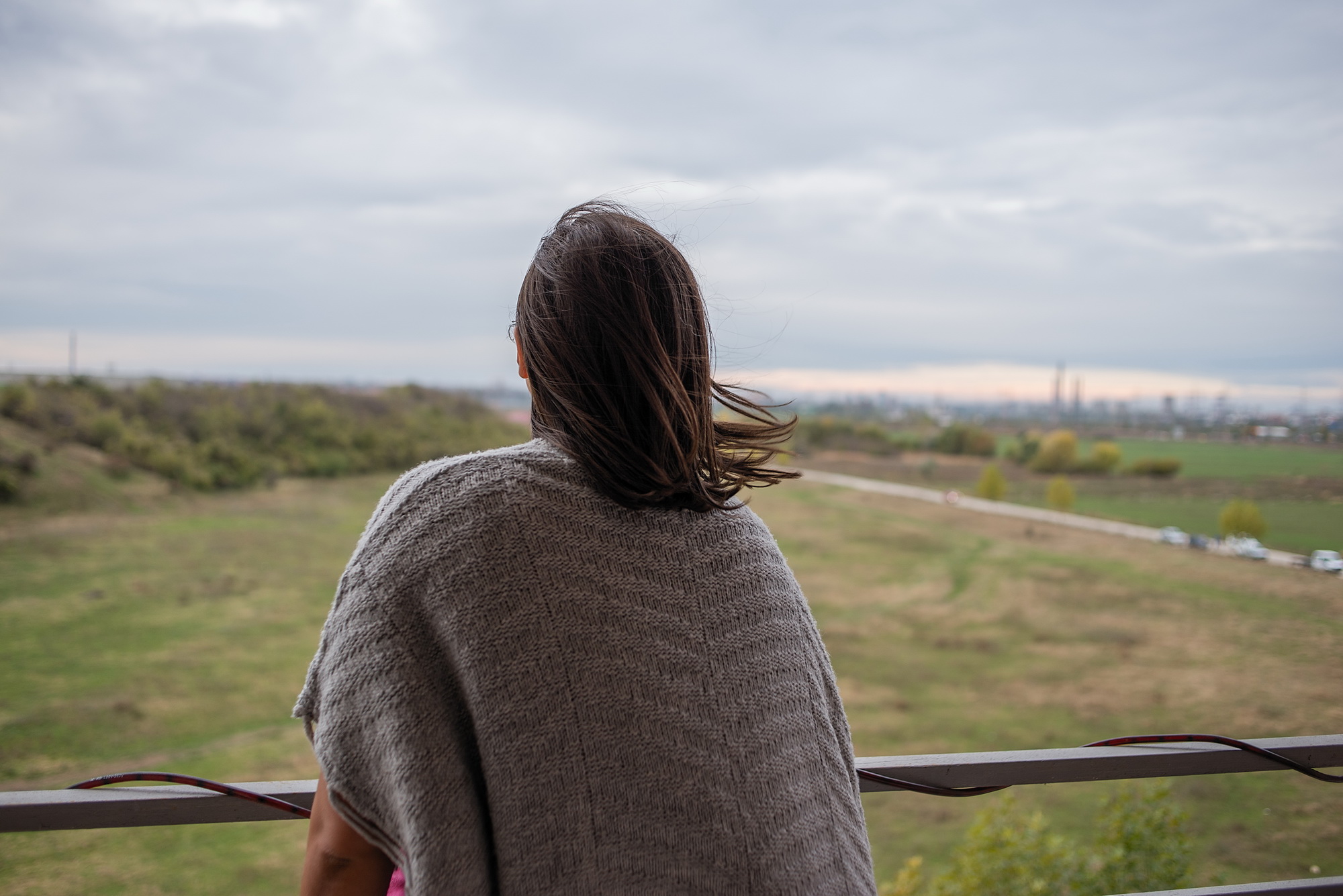
Rahela Petrescu is watching the empty space which separates her apartment block from Bucharest. " I was born and raised in the countryside. Here, from my balcony, I can see sheep, goats, rabbits, various birds. I'm so happy to leave here, at the edge. Each day I'm telling myself how happy I am". Rahela lives in Confort City, a residential complex 4 km away from the Bucharest city.
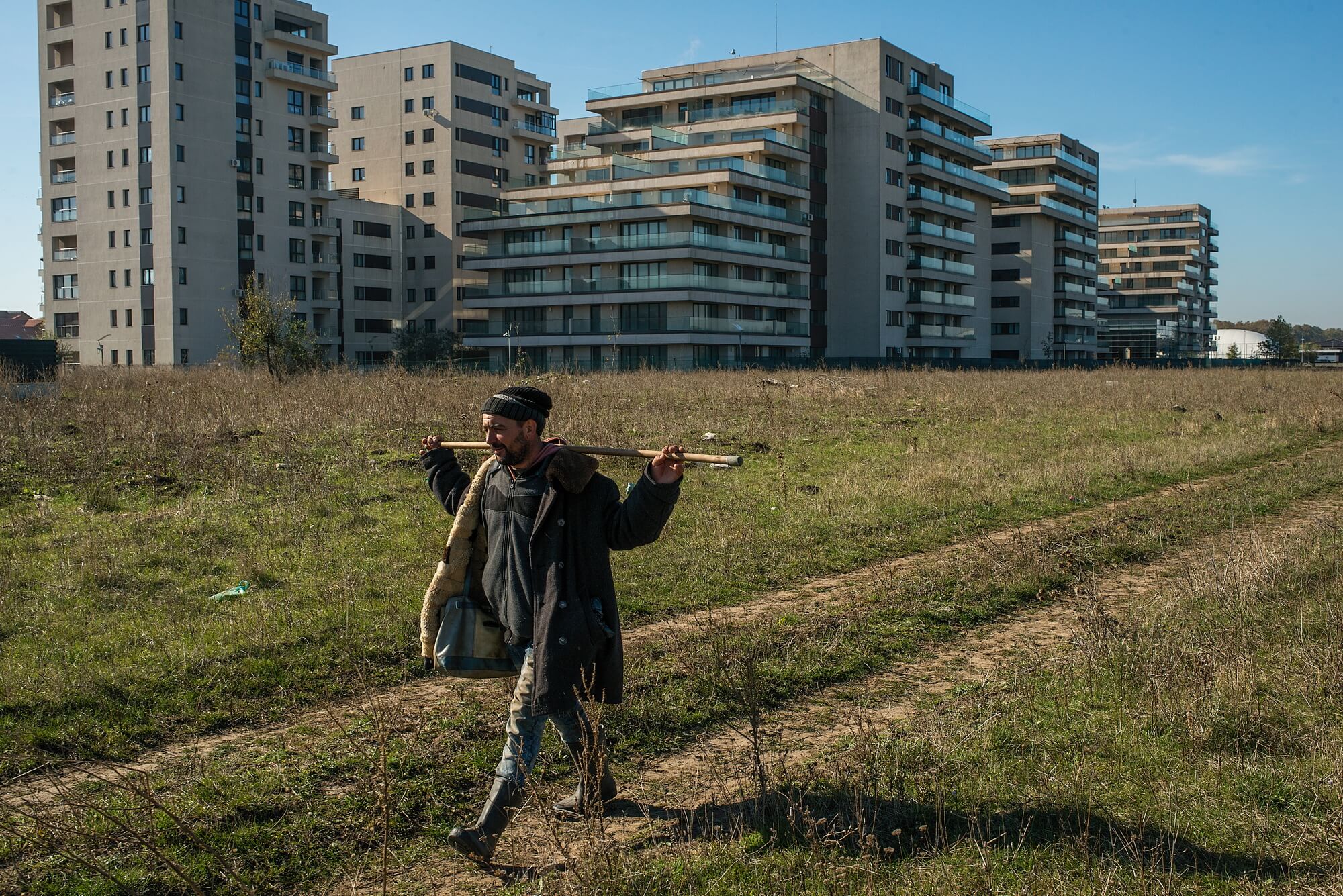
Cristi, a shepherd from the countryside, leads his flock in Pipera, the North Part of the Capital, with the Green Vista new neighbourhood in the background. 20 Years ago, Pipera was mainly inhabited by shepherds and their flocks. Today, with the real estate expansion, Pipera is one of the most expensive parts of the city
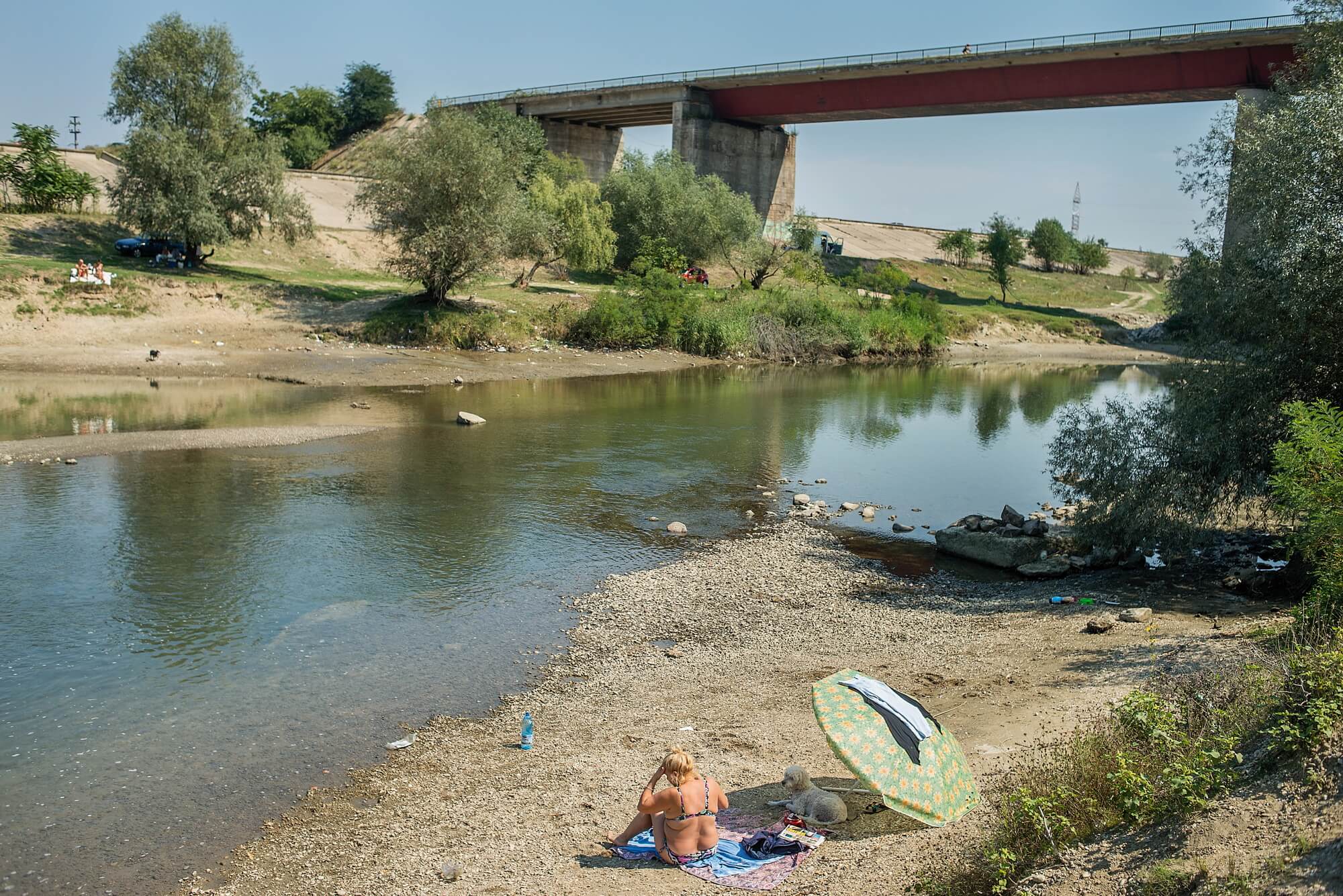
A woman sunbaths next to Arges river, under a bridge which serves one of the main gates to the city entrances in the south. Due to the low rains, the river is almost drained in this time of the years. There are days when this area, ironically called " the seaside of the poor" is packed with people and barbeques. Bucharest, a 2 million city, lacks the entertainments places.
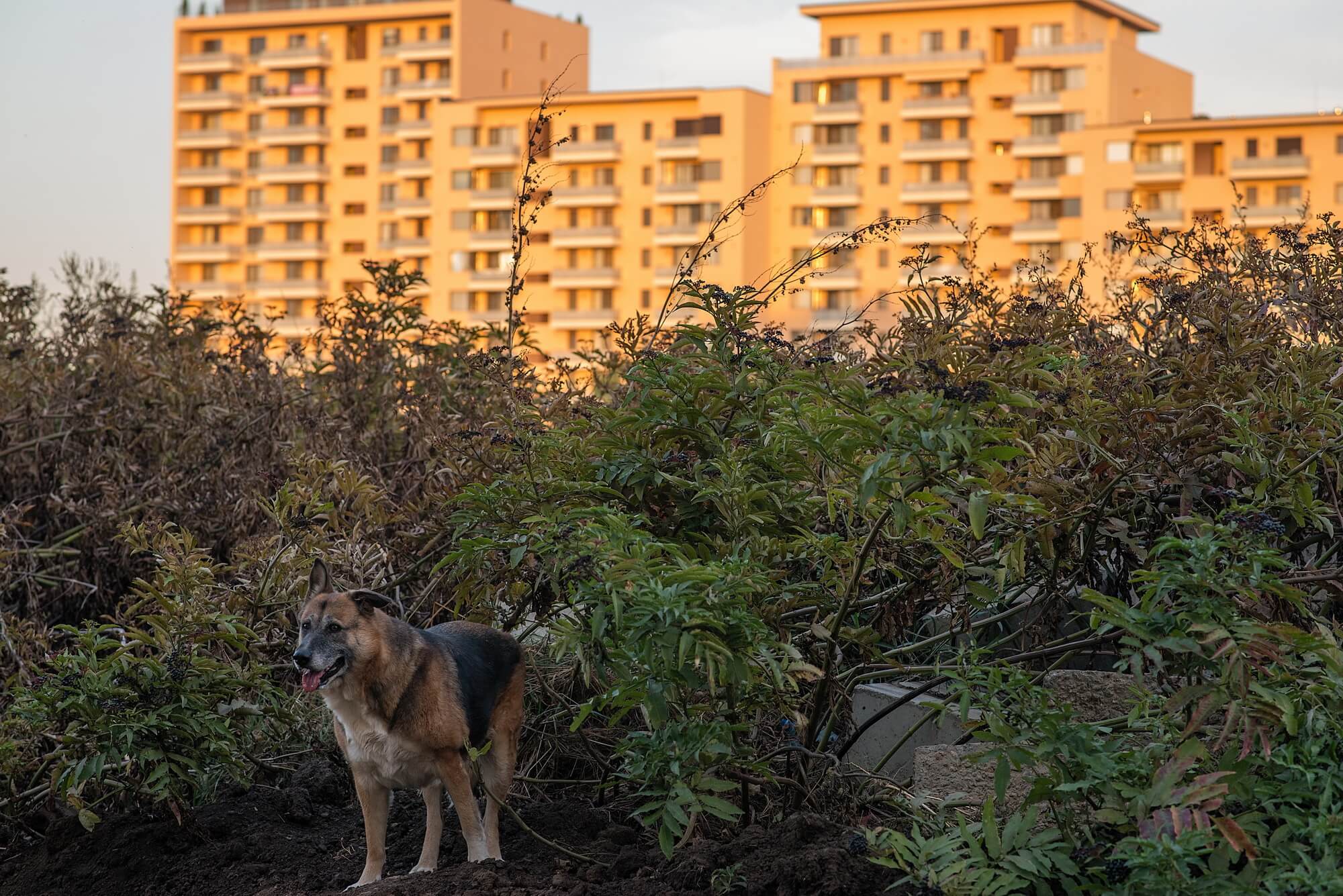
Years ago, Pipera was mainly inhabited by shepherds and their flocks. Today, with the real estate expansion, Pipera is one of the most expensive parts of the city
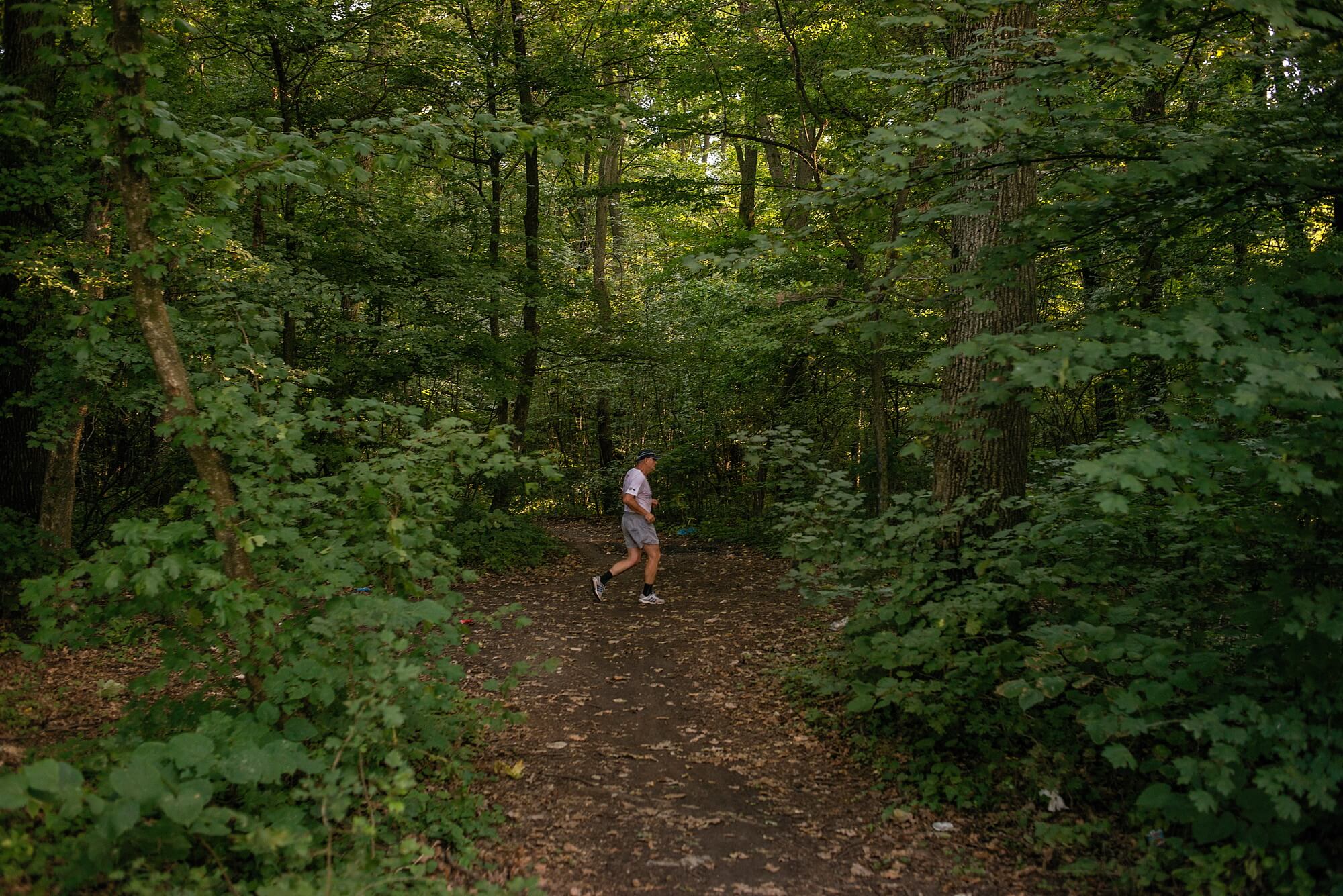
A man is jogging in the forest next to a newly built residential complex, Greenfield, North part of Bucharest
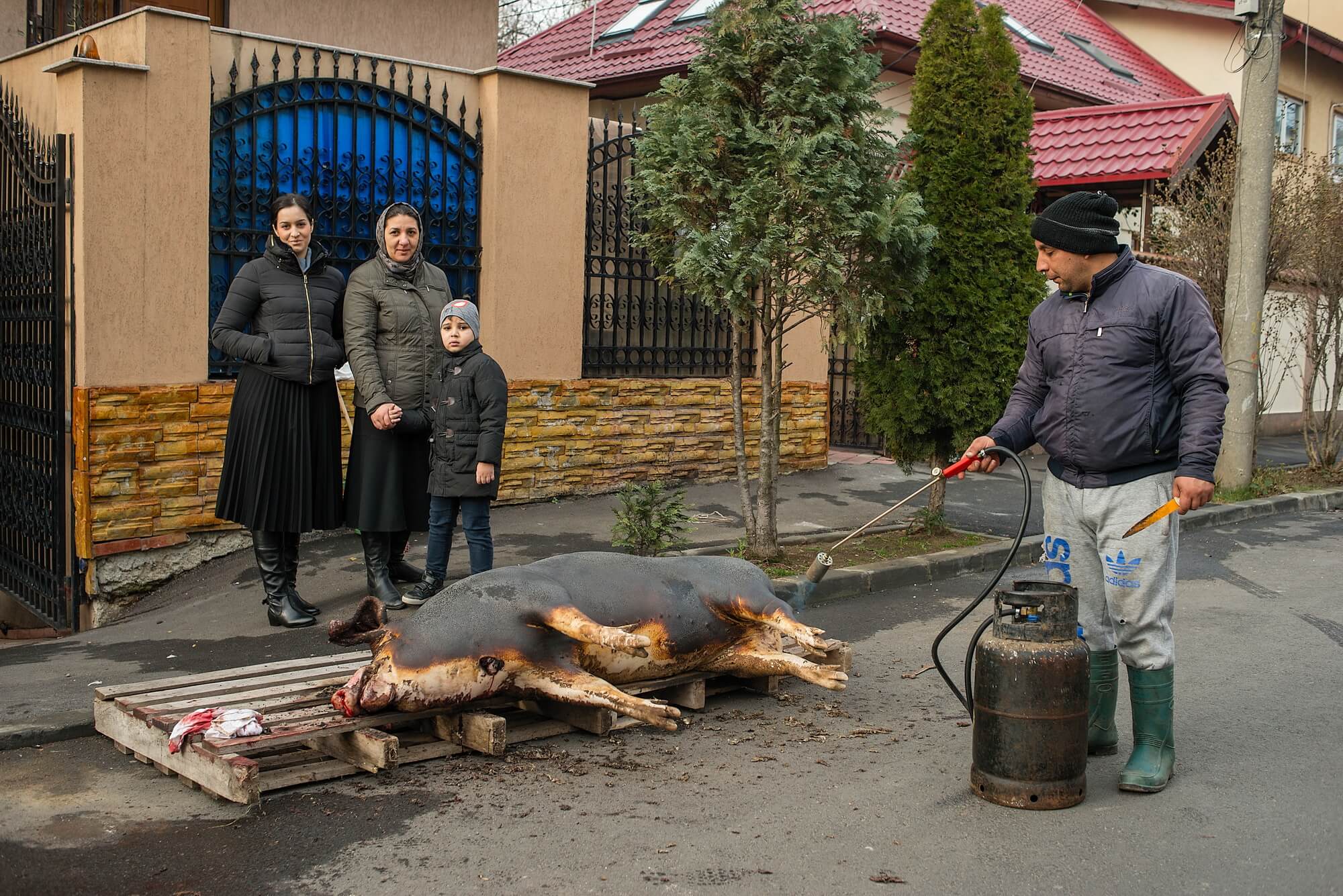
A family poses in front of their house in Bucharest next to a ritualic sacrificed pig. The animal arrived already killed and the blood on the left comes from a sacrificed chicken. This ancient ritual, linked with the Christmas Eve is often seen in the Romanian countryside and sometimes outskirts or at the capital's periphery, which still has very tight ties with the rural society.
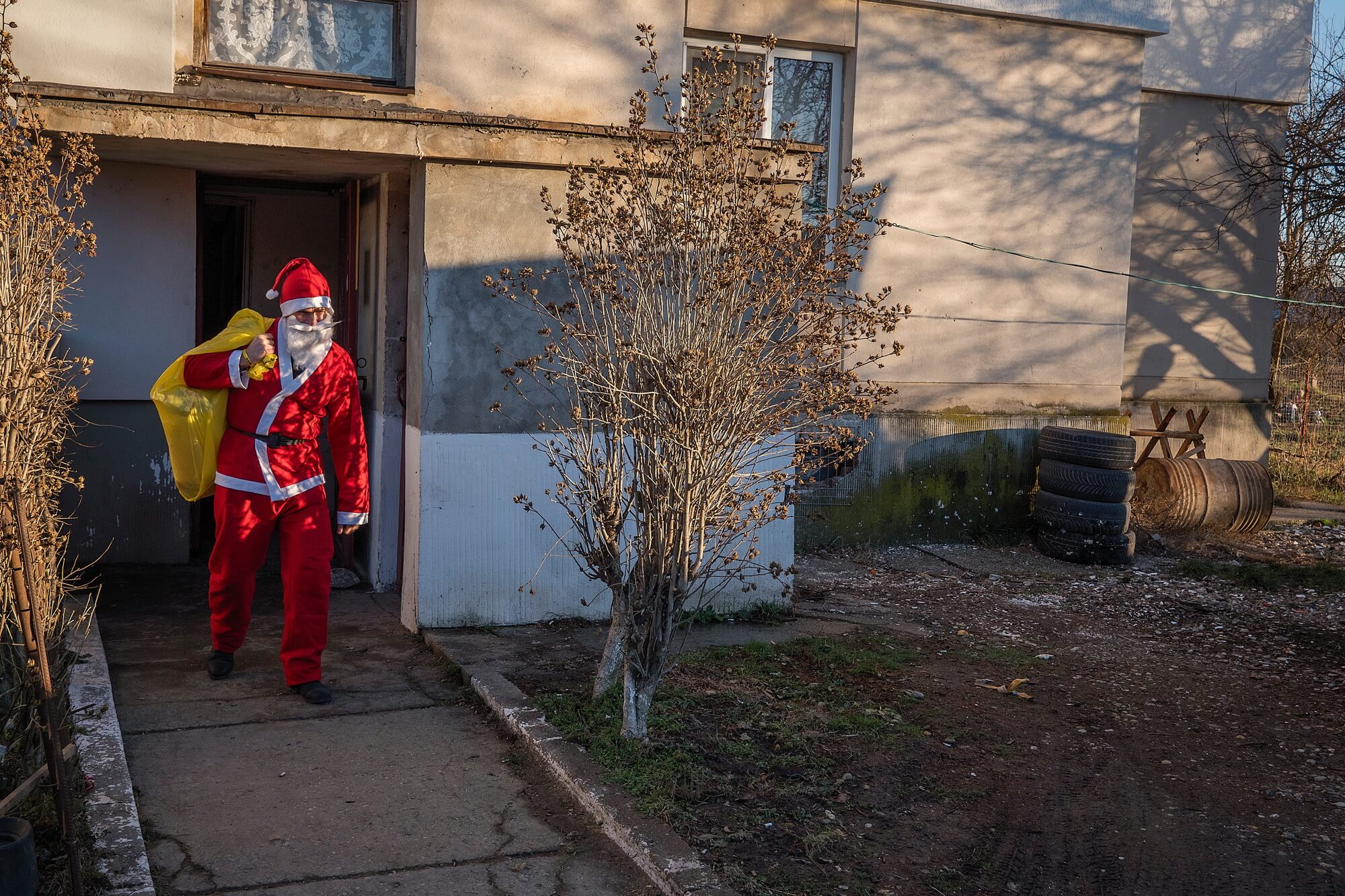
A man dressed in Santa prepares a surprise appearance. On the Christmas day, his family and friends are making a barbeque party outside the apartment block they live in, at the Bucharest periphery, Bolintin Deal. Western celebrations such this or Valentine's Day are becoming very popular as Romanians are embracing or at least hoping to a Western way of life
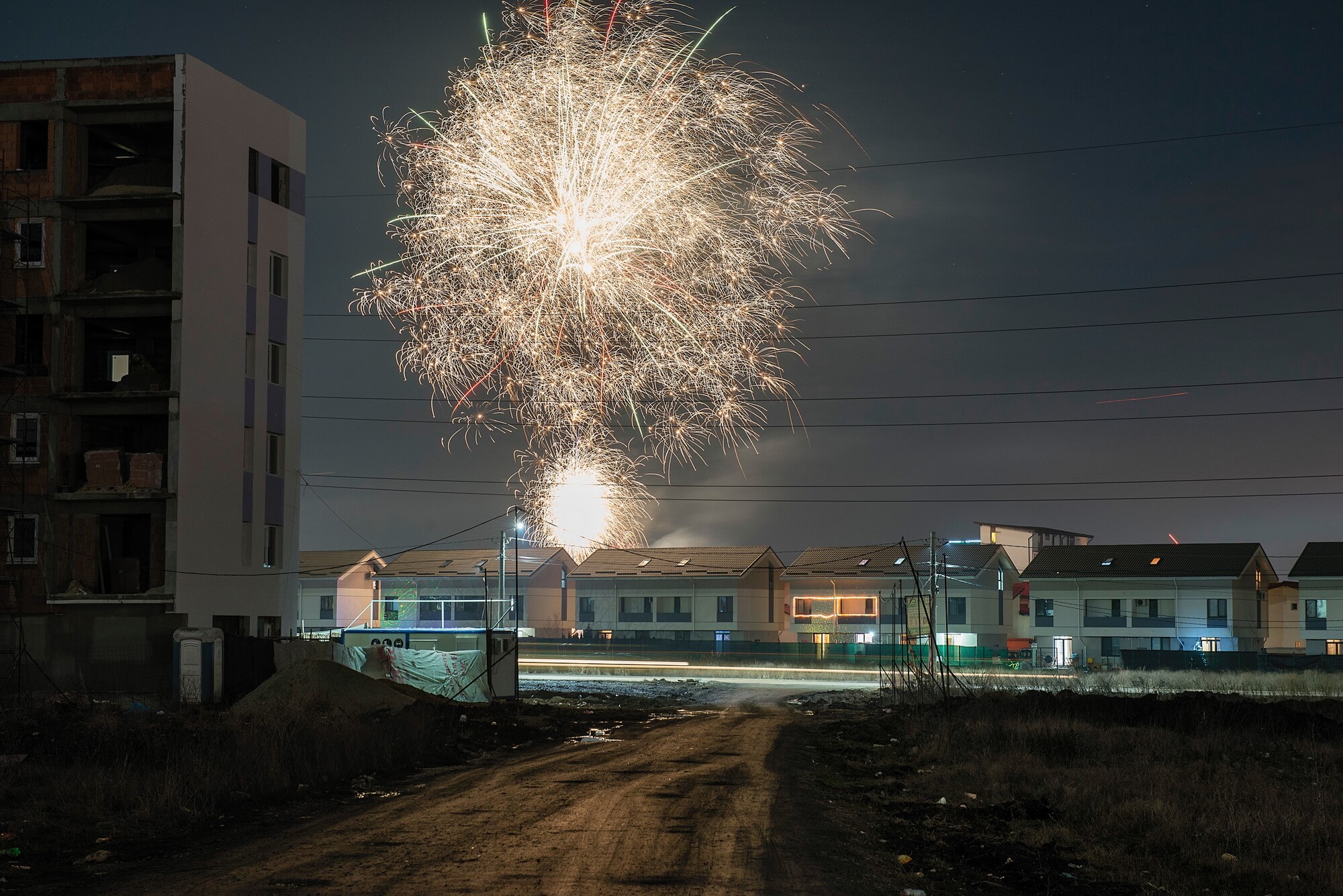
The New Year firecrackers near a new residential complex for the middle class at the edge of Bucharest (Militari)
Periferia B Newspaper
The periphery, until recently just an antechamber to the great capital city, a place of transition for those who can’t yet afford living in the city, is gradually losing its role as wall of a besieged citadel. Now we see a reversed flux: people flee from the city, albeit temporarily. Contrasts and contradictions are Bucharest’s most prominent features and continue to define its image, as they have since its beginnings. Wherever you start your walk along its circumference, you can meet pickers of medicinal plants, landfills and mounds of rubble, residential areas with aspirational names (German Residence, French Village, Barcelona Residence, etc.) right next to industrial facilities, model aircraft enthusiasts (Chitila), witches, sportsmen, groups out for a barbecue, homeless people. The same space can gain different meanings depending on the various ways people relate to it.

